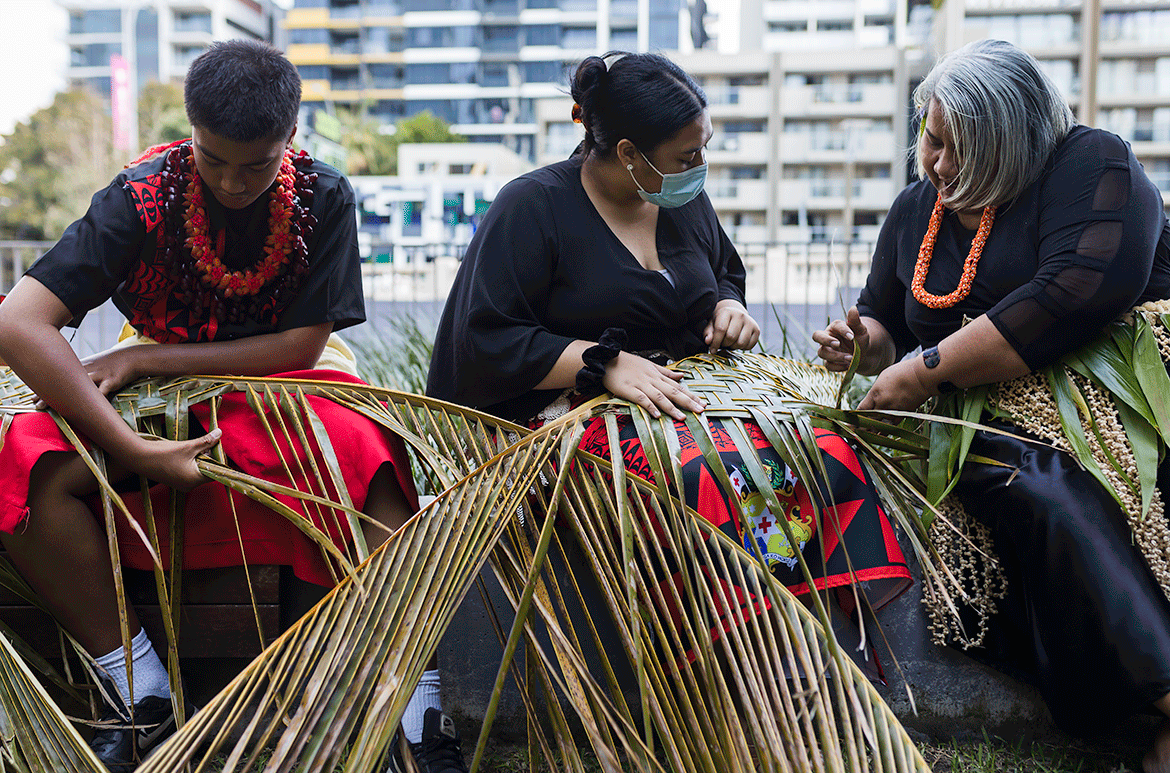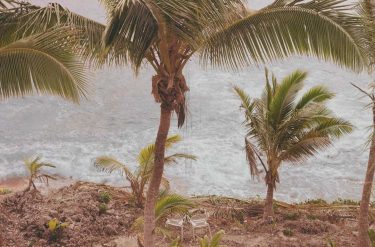For artists and arts workers, meaningful community engagement requires a long-term commitment to learning, write ACE Project team members Moale James and Osanna Fa’ata’ape, who here explore the ‘The 10th Asia Pacific Triennial of Contemporary Art (APT10) project’s aims through a reflective case study and poem.
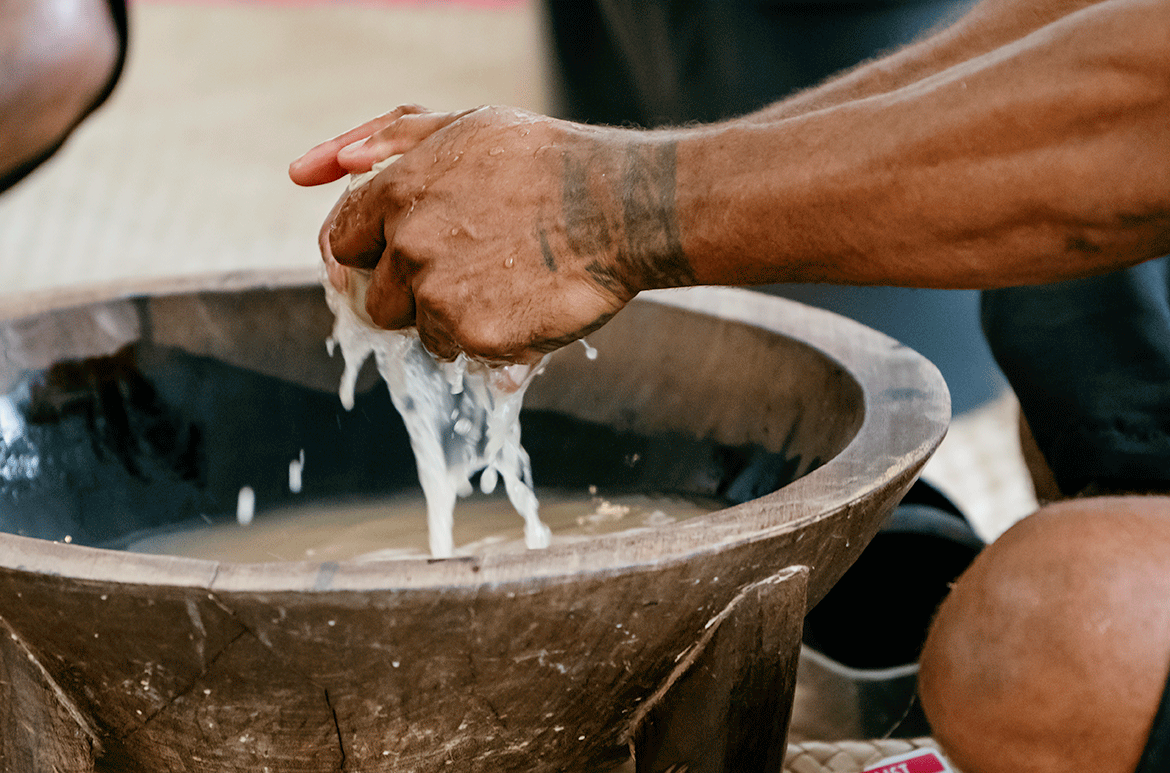
For the Australian Centre of Asia Pacific Art (ACAPA)1 Pasifika Community Engagement (ACE) Project, I wear multiple hats. I worked on Salote Tawale’s APT10 project — installed as No Location 2021 at GOMA — as an ACE catalyst and a site-build assistant (although the team jokingly called me ‘the foreman’). Initially, the project was a self-portrait of Salote’s experiences as a Fijian–Australian diaspora woman. I would argue that her bilibili reflects the histories and stories of the wider diaspora community. The warehouse was more than just a build-site; it became a place of cultural safety for all participants, Pacific Islander or not. This was a place of teaching and learning, a place where one’s first language was prioritised, and a place where all senses — sight, sound, smell, taste, touch — differentiated from Western norms.
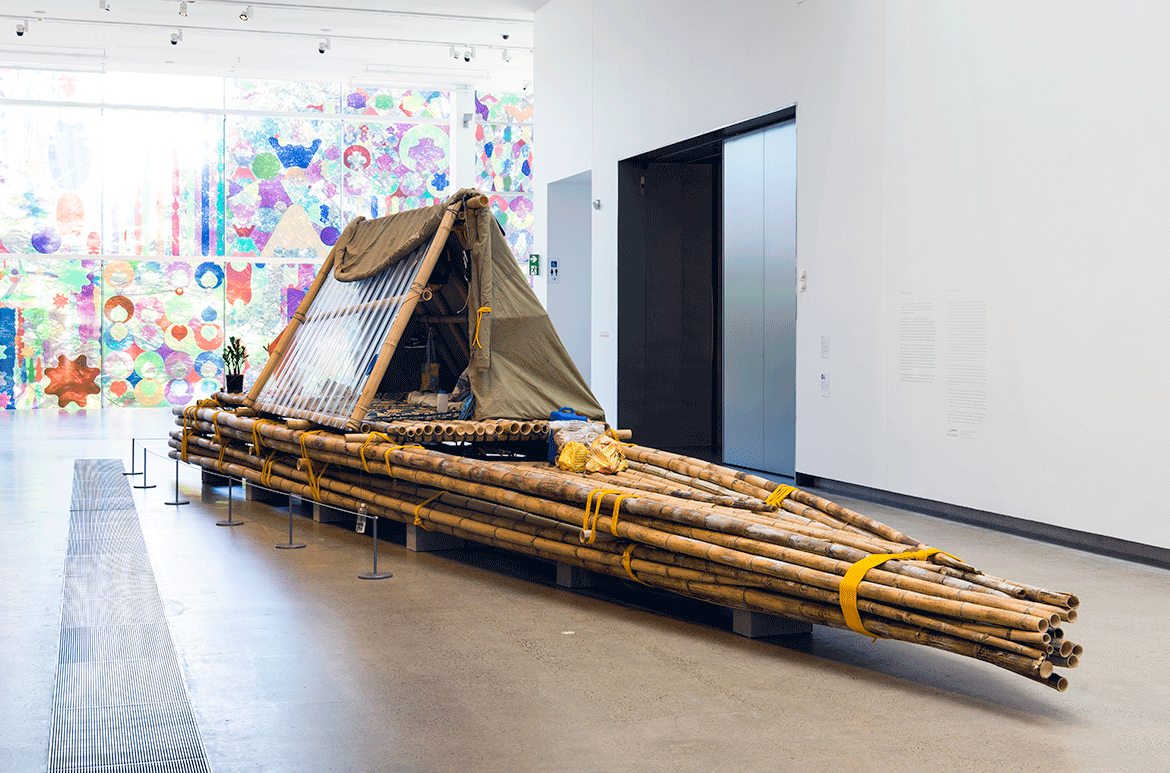

No Location 2021, September 2021 / Photograph: L. Wilkes © QAGOMA
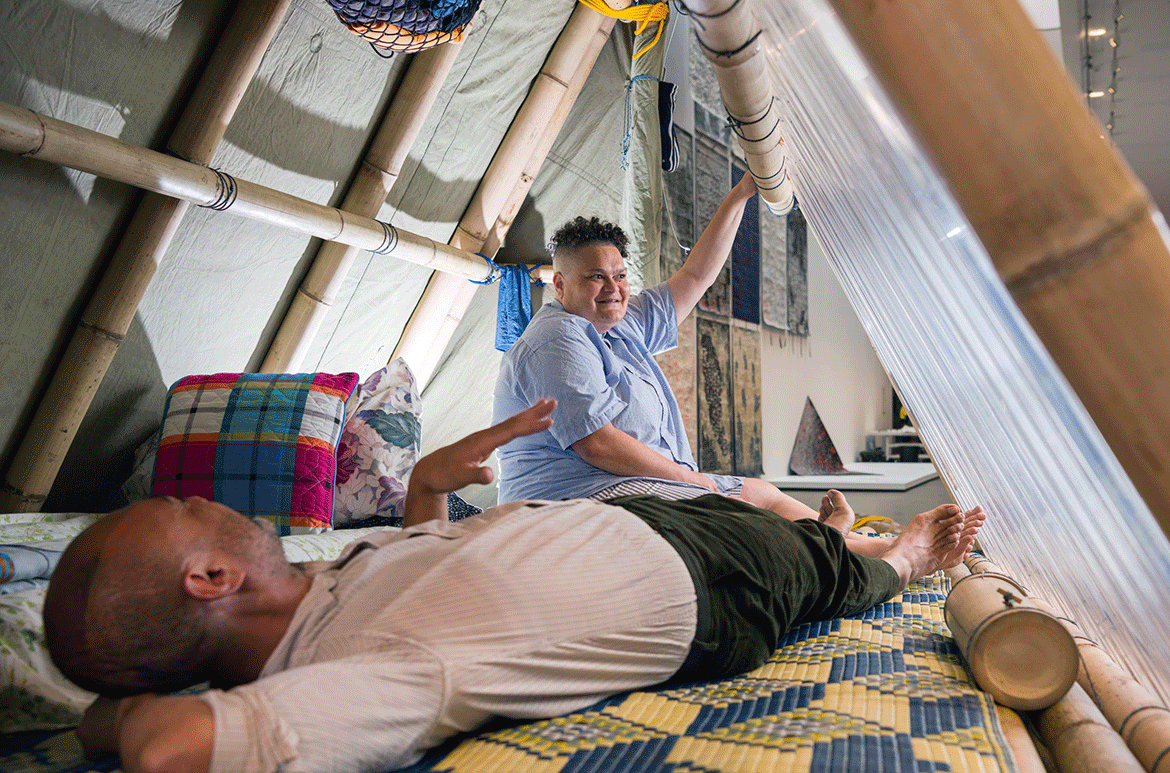
The warehouse holds multiple trolleys of bamboo stretching 20 metres in length down the room. Salote’s request sings through my ears: ‘Bless the space for me’. I run my hands along the bamboo and announce my presence, reassuring the stems that although I am not the artist, they are in safe and capable hands. There were anxieties from all parties, not having Salote onsite for the build (due to COVID-19 travel restrictions). I was concerned her vision wouldn’t be fully formed, so I asked Salote how she would want the room to feel if she was there. What music should I play in the background? What food did she want participants to be fed? What tools should we use? These questions framed the spirit of our relationship — not as a transactional exchange of services, but with an honest desire to support her vision in its entirety.
This is the learning process at the heart of the ACE Project: to create spaces that design and deliver diverse experiences of engagement, and to reflect and document that process in ways that contribute to an expanded vision of how art institutions can truly engage communities. I can think of moments in working on No Location where the fruits of our intentions really came into bloom, involving — would you believe it? — a machete. Salote’s request for this tool to clean the bamboo required various department signatures. But the instant we handed these machetes — tools community participants like Suliasi Talakai Naulivou and Jonah Kalousese Waqa had been using since childhood — to our team was the moment the Gallery, as an institution, started relinquishing power. I later found out a master bilibili builder, Sevu Nasaunidoko, was called upon by Suliasi to make sure the installation was not only crafted the way it historically would have been, but also that it would indeed float.
I once heard Ruha Fifita, QAGOMA’s Curatorial Assistant, Pacific Art, and ACE Project Coordinator, say, ‘Perhaps an artwork isn’t fully completed until it is viewed by an audience’.2 At our Brisbane–Fijian community viewing, I saw faces light up with a sense of pride that a large-scale installation representing their communities existed in an institution like QAGOMA. I watched children from the Fijian community run up to the installation, hearing their Elders tell stories about how these boats were used ‘back home’; No Location brought memories back to life.
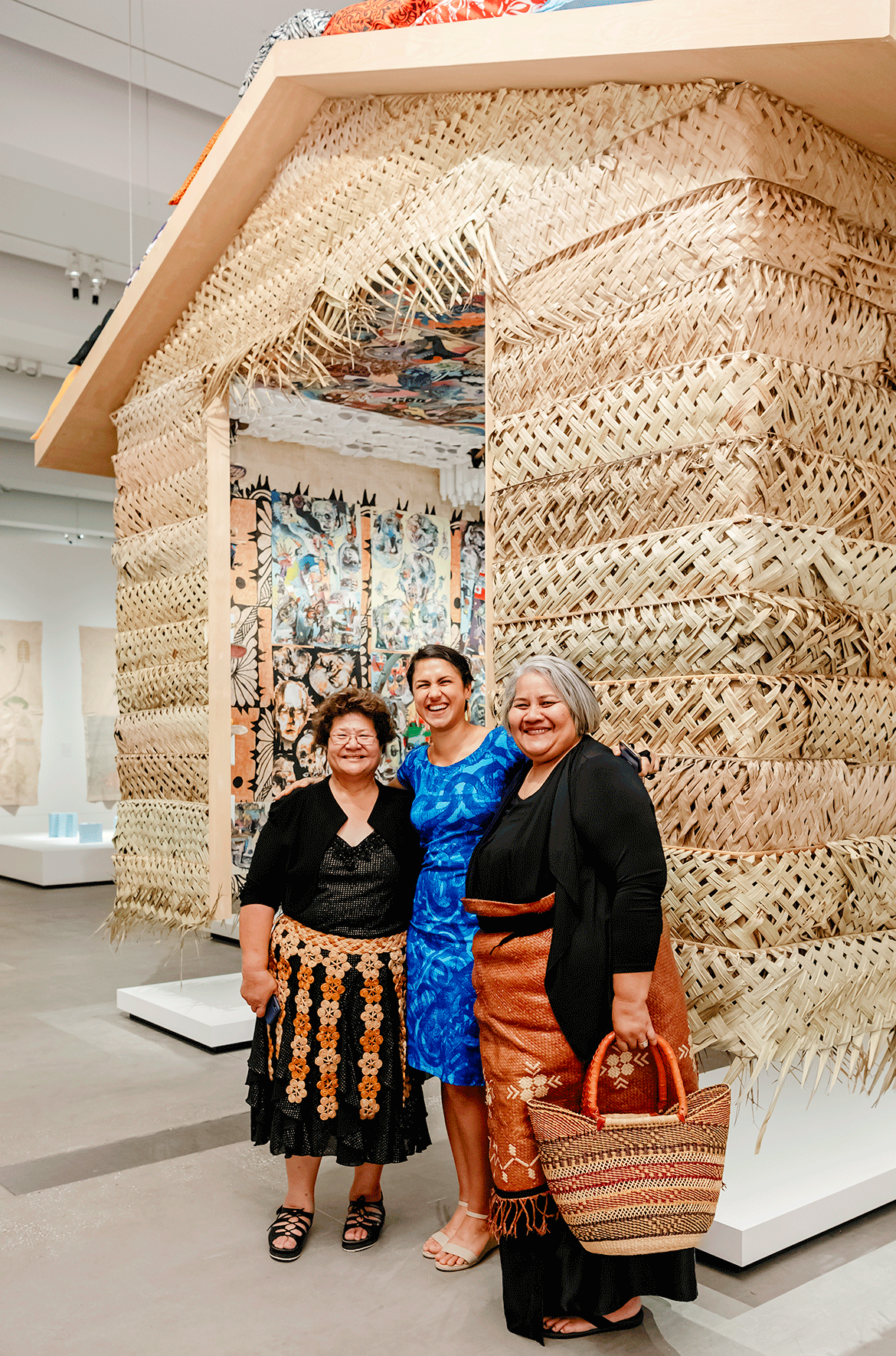
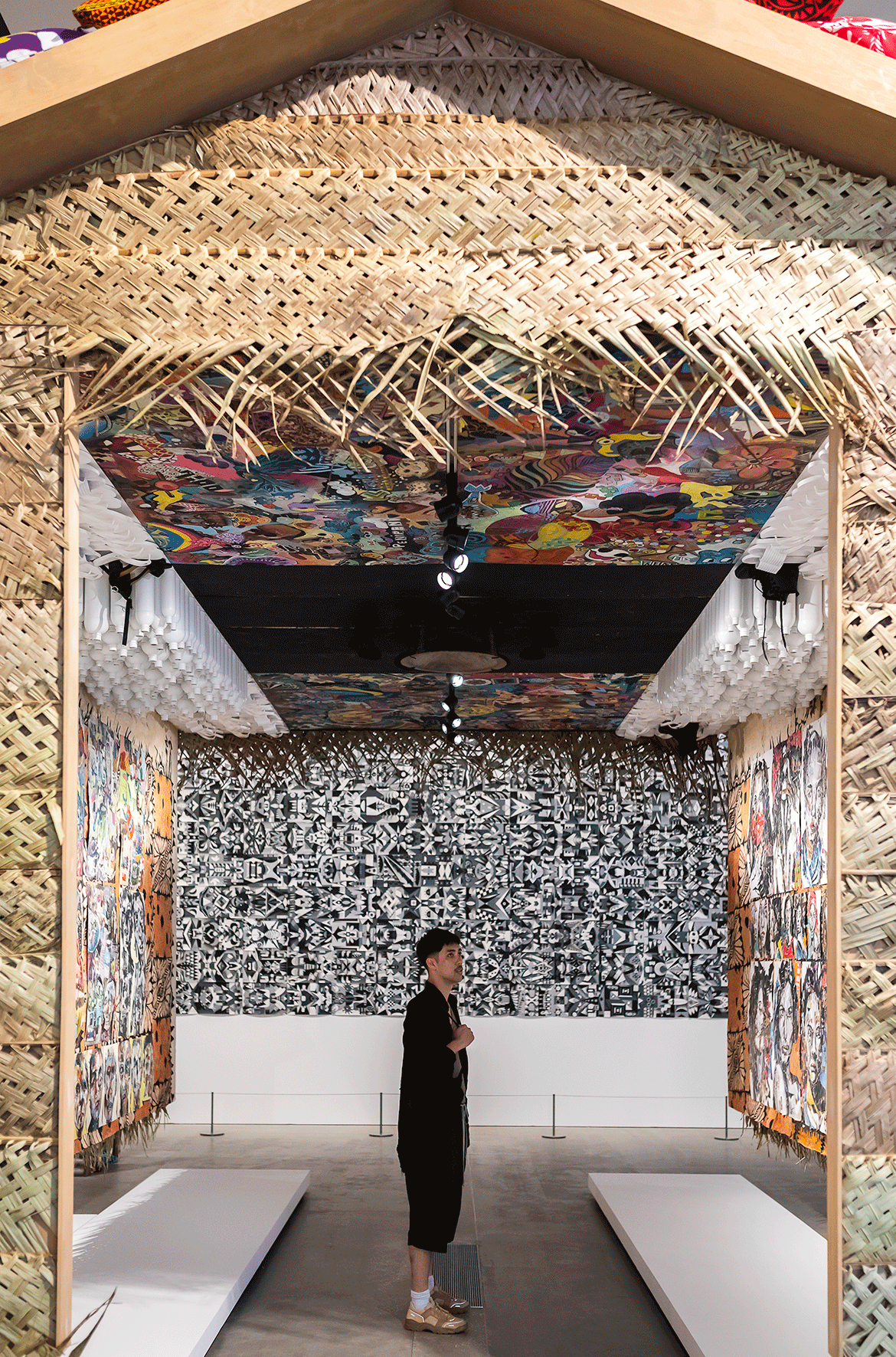
The ACE Project asks, ‘How do we meaningfully engage community within the institution’? No Location is a perfect case study: through conversations with communities and their artists, we allow opportunities for the institutional way of doing things to adapt. And we allow our practice to evolve — as histories and ways of living, being and belonging are, too, ever-changing. There is beauty and power in embracing language, food, music and community as tools for change.
Moale James is a Darwin-born, Papua New Guinean woman, with family ties to Central Province and the Motuan people. James belongs to Gaba Gaba — an eastern coastal village in PNG — and currently lives in Kallindarbin (Ashgrove) on Turrbal Countryin Meanjin (Brisbane).
Endnotes
1 The Australian Centre of Asia Pacific Art (ACAPA) is the research arm of QAGOMA’s Asian and Pacific activities.
2 Ruha Fifita, in conversation with participants at the ‘Pasifika Young Peoples Wellbeing Network’s ACE Activation: Creative Pasifika 2021’, GOMA, November 2021.
teu le vā
a basket of possibility
woven by institution and community
resourceful and abundant
convention meets curiosity
method meets malleability
framework meets fluidity
the deeper the roots
the sweeter the fruits
anchored in connection
cultivated through talanoa
nourished by deep reflection
strengthened through fa’asoa
venturing into unknown produces
fertile ground for seeds to be sown
away from home
in the land of milk and honey
our niu tastes different
expression evolving as we change
whilst our values remain the same
like our ancestors we traverse vast waters
adapting to the rhythm of the shifting tides
drawing upon our ways of being
moving, tasting, hearing, feeling
our mother tongue keeping alive
the ties to home
as we mark our tapa
as we build our waka
as we sing our waiata
as we feed our manava
as we speak our gagana
we honour our whakapapa
we cultivate mana
we teu le vā
drawing upon our abilities
we reshape the possibilities
nā tō rourou, nā taku rourou
ka ora ai te iwi
people of the most biodiverse sea
hues of colours not found on the wheel
our oceans ebb and flow
washing up treasure and pearls
reflect on how the light hits
how the flavours enrich
an oeuvre of possibility observed
for the cycle to begin again
Osanna Fa’ata’ape is a South Auckland–born Samoan woman, whose lineage stretches to the villages of Sale’aula, Vaie’e and Iva. Fa’ata’ape was raised in Meanjin (Brisbane), Queensland, and is now based on Ngunnawal Country, Australian Capital Territory.
This article was originally published in the QAGOMA Members’ magazine, Artlines, no.1, 2022
This is the first in a series of blogs on the ACAPA Community Engagement Project.
Read about Asia Pacific artists / Know Brisbane through the QAGOMA Collection / Delve into our Queensland Stories / Read about Australian Art / Subscribe to QAGOMA YouTube to go behind-the-scenes
The Australian Centre of Asia Pacific Art (ACAPA) is the Queensland Art Gallery | Gallery of Modern Art’s Asian and Pacific research and publishing arm.
‘The 10th Asia Pacific Triennial of Contemporary Art’ (APT10) is at the Queensland Art Gallery (QAG) and Gallery of Modern Art (GOMA) from 4 December 2021 to 25 April 2022.
The ACE Project, coordinated by Ruha Fifita (Curatorial Assistant, Pacific Art, QAGOMA), invited members of the Queensland Pasifika community to contribute to activations and projects within APT10. This project is supported by the Australian Government through the Office for the Arts.
Featured image: Members of the Brisbane Tongan Community weaving coconut fronds to build fale walls for Seleka International Art Society Initiative’s APT10 project, September 2021 / Photograph: K. Bennett © QAGOMA
#QAGOMA
